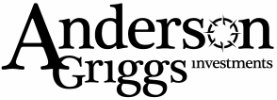|
The year 2020 was a doozy. I am hoping it was such a doozy that you all would just as soon not subject me, or yourselves, to a tortuous recounting of it. Most of the market and economy forecasts I’ve read lately start with a detailed play-by-play recounting. I will try to keep my own recount short and strictly related to market investing. 2019 was a phenomenally good year for common stock investing. 2020 started out rosy, then gave us the fastest 30% drop in market history, followed by the fastest market recovery in history. The year ended positive for most U.S. indexes, with many witnessing record finishes. The 10-year Treasury yield, however, hit its all-time low over the past 234 years of 0.52%.
So, here we find ourselves in 2021. The bad year is out of the way and everyone is… well, I think most of us are feeling a little shell-shocked. For a time we talked a lot about our shared worries and fears, but then I think many of us were so overwhelmed that we became a little numb to it all. Even recently, though our hearts may have been breaking when we saw the news covering the attack on the Capitol building, it also almost seemed like just more of the same. With all that’s been going on so far this year, I’m actually beginning to miss my family’s December TV “go to”, the Hallmark Christmas movies. I want to assure you, however, that this letter is not meant to be a pity-party declaration. I just think that all of the negativity in the air and on the airwaves may have brought us to a very widespread state of learned helplessness. This is a big phrase I learned from my Psychology undergrad study at Winthrop. Learned helplessness is exactly what it sounds like, but this definition from Psychology Today describes it well: “Learned helplessness occurs when an individual continuously faces a negative, uncontrollable situation and stops trying to change their circumstances, even when they have the ability to do so.” I came to this very smart assessment of the world (I am joking) from a real world occurrence I’m finding ever more frequent, and I bet many of you have witnessed the same. More and more now, when I’m at a stoplight and the light turns green, the first driver in line is so busy staring at their cellphone that they don’t notice the change. The drivers behind this person, however, don’t bother to honk. I see this daily now, whereas in the past if someone didn’t go when the light turned green they were promptly alerted with honks. It seems that in this COVID world of relentless negative news, we’ve even given up the fight on the roads. What’s the point? The next stop light will be the same. The funny thing about learned helplessness is that it has a simple solution, although it can be tremendously hard to enact. Learned helplessness, psychologists believe, is rooted in the perception of a loss of control. We get to the point where we feel we have zero control and so we just can’t bring ourselves to fight. To push through the debilitation, however, all one needs to do is act. This can be any amount of action, and any is key. Just the decision to act can begin the rewiring needed to get out of the situation and regain our sense of control. Here at Anderson Griggs Investments, we do our own research, but we also watch the financial news and read various reports from analysts, investment divisions, and other portfolio managers. Lately, from all of these sources, I’ve learned the following: Everything is overvalued and the stock market is going to crash. The market is going to finish the year up 10%. The economy is going to double dip and we will have a recession and inflation. The economy is going to grow with continued business re-openings and new hiring. So many conflicting views… Talk about a setting perfect for learned helplessness! Despite all of the noise out there, this is what we actually believe. Our research continues to show us what it has been showing us for the past few years now. The market as a whole is charging more for the earnings companies create for their shareholders. In other words, prices are high when you look at the market. However, there is a wider discrepancy in what one must pay for various companies than I have ever seen. Many of you may hear about this in the news as the difference between growth and value stocks. Regardless of how the stock markets move as a whole, the individual companies rise and fall separately, and at the end of the day that separation is based on the cost of the earnings capabilities of the companies. When we are selecting individual companies to invest in, or specific economic sector exchange-traded-funds to buy, that cost is what we focus on, and it is where over time we realize value. Remember, as we’ve said before, when it comes to investing the only true control an investor has is what they choose to invest in, and the price they pay for an investment. But what about gold, Bitcoin, IPO’s and SPACs? If prices are high for company earnings, can’t we invest in those as alternatives for diversification? These have all been hot in the headlines lately, paired with amazing short-term performances. To answer that question, we fall back on the old “investment vs. speculation” argument that has served many a conservative investor well. Without any real way of identifying a value for those, they are simply speculations. You purchase them solely on the hopes that someone else will buy them from you later for more than you paid, but this “investment thesis” is only hope. Right now our research indicates that large cap equities on average are priced for a 12 month forward return based on earnings of 4%. This is much more conservative than the 8% that, on average, other analysts are calling for in 2021. However, when we invest in new companies or sectors we are never buying the entire market, and we pay close attention to the price we must pay. We buy at what we believe is a discount to the company’s fair value. Our research indicates we will unlock added returns in the more value-oriented companies we focus upon. Those are large, important companies to everyday people, who depend upon their products and services for everyday life, that also pay us a dividend as owners. We also believe a continued overweight in mid-cap companies is warranted. Our research indicates the Utilities, Financials, Consumer Staples, Energy, Industrials, and Materials sector will see higher returns, especially paired with and driven by an opening economy being renewed by the vaccines. And finally, yields of fixed income products are at historical lows, which means they are historically expensive. Since the Federal Reserve reduced the federal funds rate to zero back in March of 2020, low duration and low risk fixed income products, from Treasuries to Certificates of Deposit, including short maturity bond mutual funds or exchange traded funds, all yield close to zero percent. The only fixed income products offered today yielding percentages that may make us comfortable, say 2.0%, are paired with accompanying risk that under normal circumstances we would not accept for the “balance and risk reduction” side of our portfolio. The first 2.0% yield-to-maturity, A+ rated corporate bond available on our platform has a maturity date of December 2036. What that means is, it would be a good deal if current rates remain where they are for the next 15 years. The Bull market in bonds has lasted since 1981, one of the longest bull markets in history. Increasing risk with fixed income products today does not make sense to us. For now we will continue to wait. Perhaps the recent rise in the longer-term treasuries will continue. While this may not help provide the shorter maturity fixed offerings we would prefer, it may offer us better opportunities for blended offerings down the road. We will continue our search. 2021 is a new year, and despite the beginning we’ve had so far, it is going to be a better year. The vaccines will work, old businesses that are still around will reopen, and new businesses by optimistic entrepreneurs will be established. I believe more people than fewer will rush to the cruise ships and airplanes and head to beaches, and sooner rather than later. Confidence will return faster than we fear. Will there be lasting changes to society? Probably so, but I believe those changes will be more related to the embracing of newer technology by businesses. I don’t believe a new hesitant way of life, based on fear, is our future. Remember, everything about our human nature is designed for resilience and optimism. If it weren’t, we would not be where we are today. So, if you find yourself needing to reestablish that smallest bit of control to get you out of that learned helplessness mindset, start with a short walk. Call us here in the office and talk about the markets and your savings. Review your budget and make some changes. Maybe even offer a quick honk of the horn to get others moving around you. I know I need a friendly shove every once in a while. I can’t reinforce enough that we are here when you need us. I promise you this, we all much prefer to receive phone calls from you rather than from the telemarketers, Google computers, and hang-ups. So feel free to reach out for anything. We wish you all a healthy, safe, productive, and happy New Year. Justin Anderson Comments are closed.
|
Kendall J. Anderson, CFA, Founder
Justin T. Anderson, President
Categories
All
Archives
April 2024
|
|
Common Sense Investment Management for Intelligent Investors
|



 RSS Feed
RSS Feed